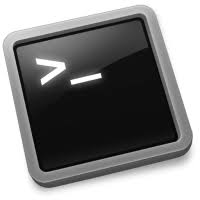If you have ever needed to protect your files, or set a directory to read only in Linux, you have probably used chmod. If you didn’t, then you probably wished that you had heard of chmod. Chmod stands for change mode and allows the user to modify access permissions to specific files.
To display a file or directories current permissions you can use the ls command. For example:
$ ls -l
-rw-r--r-- 1 erik erik 1014 2010-10-28 13:30 taps.sh
The first column of -rw-r–r– is actually showing you the current file permission for taps.sh . The output is actually broken into four parts.
-| rw- | r– | r– . The first column is used to identify:
- – denotes a regular file
- d denotes a directory
- b denotes a block special file
- c denotes a character special file
- l denotes a symbolic link
- p denotes a named pipe
- s denotes a domain socket
The second column outlines what the current users permissions are, the third column outlines what group members are allowed to do, and the forth column outlines what other users may do. The following table outlines in detail the column information. The chmod functions as:
$ chmod [Reference][Operator][Mode] file1 file2 etc.
| Reference | Class | Description |
| u | user | the current file owner |
| g | group | the file group members |
| o | others | generic users who are not part of the group or owner of the file |
| a | all | ugo is equivalent to the ‘a’ |
The chmod command will use the following operations to modify the user, group, and other fields. For example:
| Operator | Description |
| + | the addition sign tells chmod to add the value |
| – | the dash will remove the modes from the class we specify |
| = | this sets the exact mode for the file |
The modes indicate which permissions are to be set for read, write, execute. For example:
| Mode | Name | Description |
| r | read | sets the read permission |
| w | write | use to write to a file or directory |
| x | execute | use to set the execute for a file or directory |
Here are some examples using the symbolic notation of changing the file permissions.
Add Read and Write Permissions to User and Group classes
For example:
$ ls -l taps.sh
-rw-r--r-- 1 erik erik 1014 2010-10-28 13:30 taps.sh
$ chmod ug+rw taps.sh
$ ls -l taps.sh
-rw-rw-r-- 1 erik erik 1014 2010-10-28 13:30 taps.sh
Notice in this example, only the group class (third column) changed because I already had write permissions as the current user.
Add Read, Write, Execute to User and Group
Lets say we want taps.sh to have all permissions to those who are lucky enough to be in our group, or be us. To do so:
$ chmod +rwx taps.sh
$ ls -l taps.sh
-rwxrwxr-x 1 erik erik 1014 2010-10-28 13:30 taps.sh
Using the chmod +rwx command, we ‘add’ the read, write, and execute option to our file.
Well that is all great, but for me I usually want to other make a file read only for myself, or executable for anyone. This can be done using numerics rather than using these symbolic notations mentioned above.
Numeric Example For Read-Only
The numeric’s group values together, for example:
| # | Permission |
| 7 | full |
| 6 | read and write |
| 5 | read and execute |
| 4 | read only |
| 3 | write and execute |
| 2 | write only |
| 1 | execute only |
| 0 | none |
I use chmod 644 filename quite often. This sets the permissions to read only for group and other, i.e. only the user may read or write to the file.
$ ls -l taps.sh
-rwxr-xr-x 1 erik erik 1014 2010-10-28 13:30 taps.sh
$ chmod 644 taps.sh
$ ls -l taps.sh
-rw-r--r-- 1 erik erik 1014 2010-10-28 13:30 taps.sh
Numeric Example For Execute
Another favourite of mine is execute by anyone. This comes in the form of 755.
$ ls -l taps.sh
-rw-r--r-- 1 erik erik 1014 2010-10-28 13:30 taps.sh
$ chmod 755 taps.sh
$ ls -l taps.sh
-rwxr-xr-x 1 erik erik 1014 2010-10-28 13:30 taps.sh
So the 755, referring to the table means. User = 7 = all, Group = 5 = read and execute, Other = 5 = read and execute, as shown in the ls output above. This way you can mix and match the numerics, if you want it open to everyone you can use 777.
Change Permissions Recursively With ‘chmod -R’
If you want to set the permissions for all files under a directory to the same setting, you can pass the -R command in front of the permission you would like to use.
$ chmod -R 777 /home/erik/
This will set every file under my home directory to ‘all’, i.e. read, write, execute by anyone.
Hopefully this makes sense to you. Rather than giving you a huge set of examples, I hope I have taught you how to fish!

